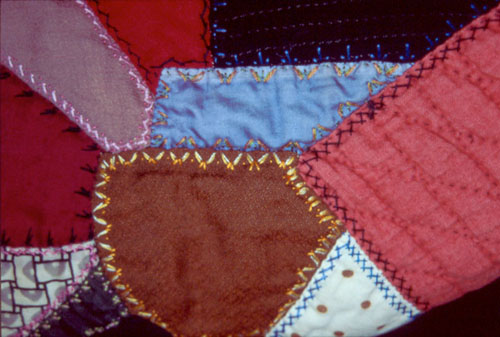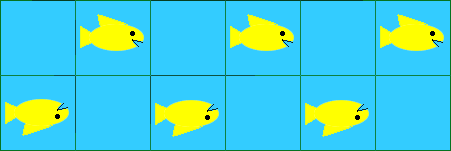Teacher Notes
There are many activities that you can create around frieze designs. Below are a few suggestions. The appropriateness of the specific activities depend on the age and grade levels of your students.
Find frieze designs
Have your students find frieze designs. You can find them in many places, in artwork and crafts, on wallpaper borders, on ironwork railings, on buildings and many other places. The "Decorative trim on a building" on the previous page is around the door of a church. The image below is detail from a hand stitched quilt. The stitches form frieze designs.
If you have a multicultural classroom have the students find frieze designs in the art and crafts of their cultures.

Classify frieze patterns
Have your students classify and frieze patterns they find. This can be a group activity. Print the recognition chart and put it in a place where the students can see it. Click here to find a recognition chart in Adobe Acrobat format, suitable for printing.
Make frieze designs
Have your students make frieze designs - for younger students you may need to set up a grid. They can use objects for the cells, for example socks or mittens or identical paper cutouts. The cells must have no symmetry.

Other cells might be footprints, handprints, rubber stamps or potato stamps but you need two stamps, one the mirror image of the other, like right and left handprints.
Complete the proof
Have your students complete the proof by verifying that no further patterns result from additional applications of the isometries to the patterns already found. Have them use a table to keep track of what they do and ensure that they have examined all possibilities.
Show us your work
If you or your students find interesting frieze designs or make your own designs, send us a picture at
Math Central
c/o Department of Mathematics and Statistics
University of Regina
Regina, Saskatchewan
S4S 0A2
or
by
email